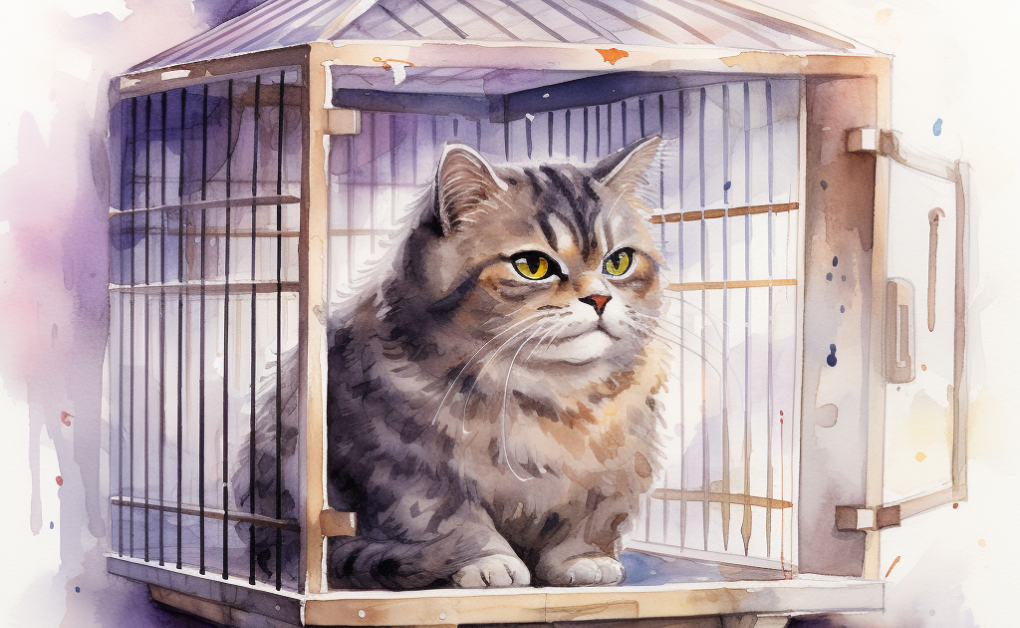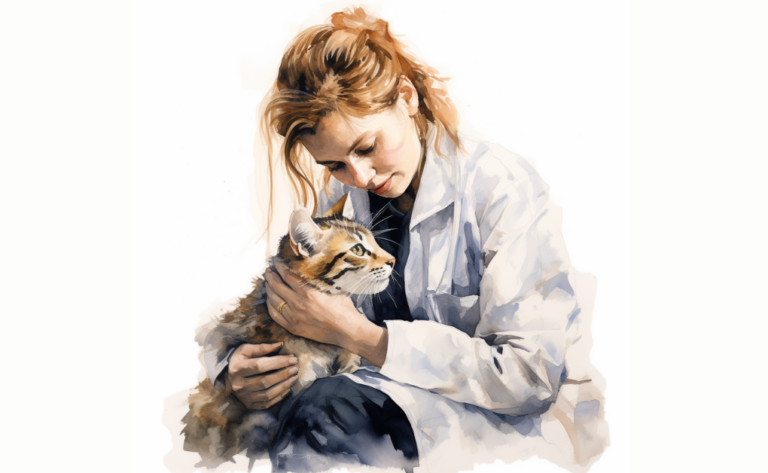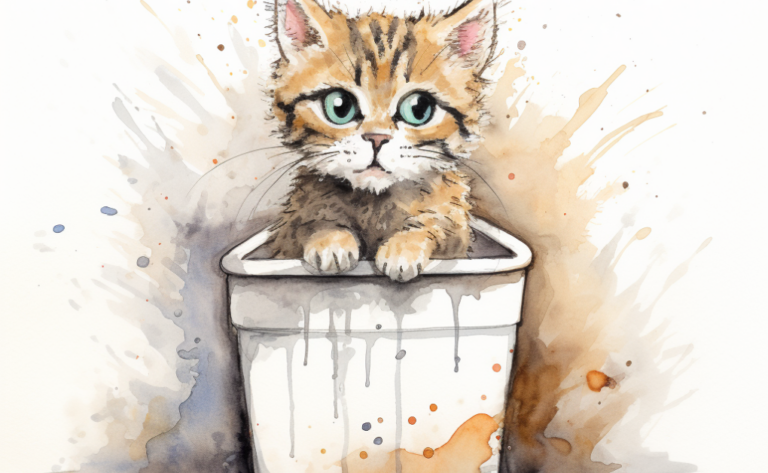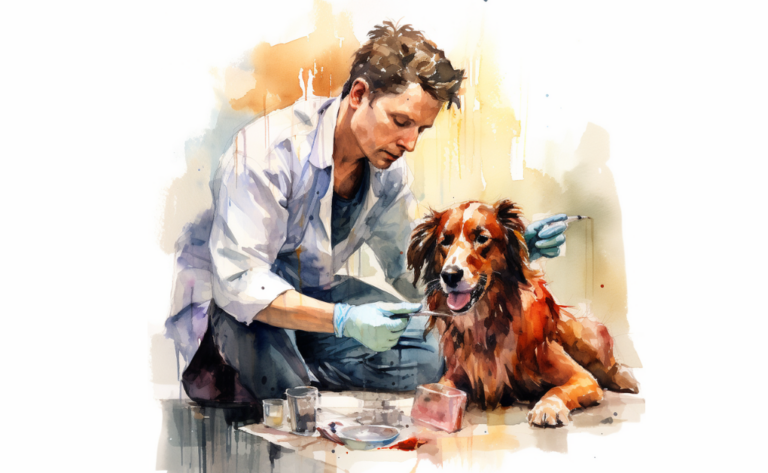What is Diabetes Mellitus in Cats?
What is it?
How is it Treated?
Breed Predispositions
Burmese, Siamese, Abyssinian, and Himalayan cats.
Introduction
After observing her normally energetic and curious Bengal cat, Simba, becoming increasingly lethargic and drinking water more frequently than usual, Lisa grew concerned about his health. Prompted by these unusual symptoms, she took Simba to the veterinarian for a comprehensive examination. The veterinarian performed a series of tests and diagnosed Simba with diabetes mellitus, a condition that can affect cats of all breeds and ages.
Diabetes mellitus in cats represents a persistent metabolic disorder impacting the body’s utilization of glucose, a type of sugar fueling the body’s cells. This endocrine disease is marked by a deficiency in the hormone insulin, which the pancreas produces to control the glucose quantity within the bloodstream.
In healthy felines, insulin ensures cells have the necessary, appropriate glucose. However, diabetic cats may have inadequate insulin production or a condition known as insulin resistance, where the body’s cells are insufficiently responsive to the insulin generated. This situation fails to utilize glucose effectively, culminating in elevated glucose levels in the blood or hyperglycemia.
Failing to regulate blood sugar levels accurately, a cat with diabetes mellitus can encounter multiple health issues. It’s a severe condition that necessitates continuous management. While it’s not curable, diabetes mellitus can be effectively managed with the correct treatment and care in the feline population. It’s worth noting that while the insulin requirement may be ongoing, the manifestation of type I diabetes in cats, a common endocrine disorder, is somewhat less frequent.
Two Types of Diabetes Mellitus in Felines
Two main types of diabetes mellitus can affect cats:
Type 1 Diabetes Mellitus
This form of diabetes is less common in cats and is characterized by total or near-total destruction of the beta cells in the pancreas that produce insulin. The result is a complete deficiency of insulin in the body, leading to high blood glucose levels. The underlying cause of this destruction is not completely understood, but it’s suspected to involve an autoimmune process, where the body’s immune system mistakenly attacks and destroys its cells. Cats with Type 1 diabetes require lifelong insulin therapy.
Type 2 Diabetes Mellitus
More commonly found in cats, Type 2 diabetes involves inadequate insulin production and decreased sensitivity to insulin, often referred to as insulin resistance. In many cases, this form of diabetes is linked to obesity since excess fat can contribute to insulin resistance. The pancreas initially tries to compensate by producing more insulin, but over time, it can’t keep up with the demand, and insulin production decreases. Although Type 2 diabetes can sometimes be managed with dietary changes and oral medications, some cats may require insulin injections.
Understanding the type of diabetes mellitus a cat has is crucial for appropriate treatment and management. This differentiation also helps set expectations for the disease’s management, as Type 1 diabetes requires more intensive insulin therapy. In contrast, Type 2 diabetes may be managed through other means, especially if detected early and the cat is not severely ill.
Causes of Diabetes Mellitus in Cats
Cats exhibit a particular predisposition to developing diabetes mellitus due to their distinct anatomical structure. The prevalence of diabetes ranges between 0.2% to 1% in the feline population. A significant risk factor for developing diabetes in cats is obesity. Excessive body weight can induce increased resistance to insulin, resulting in the body’s cells not responding appropriately to this hormone. A sedentary lifestyle can amplify weight gain and obesity, heightening the risk of diabetes. Regular exercise, on the other hand, assists in regulating the glucose curve and preserving a healthy body condition.
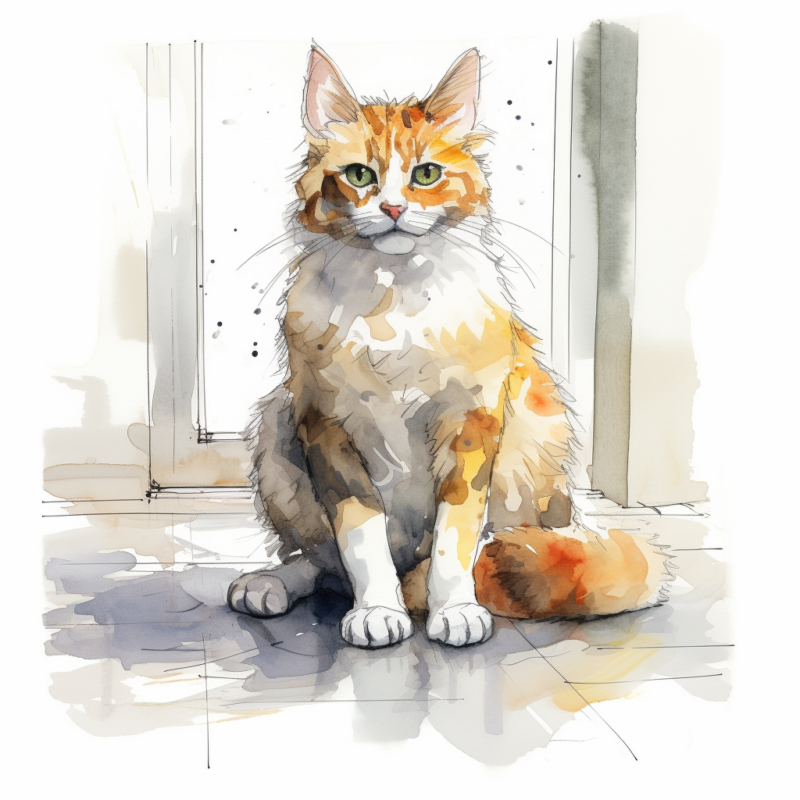
Diets abundant in carbohydrates are often linked to the onset of diabetes in cats. As obligate carnivores, cats are not equipped to efficiently process high carbohydrate content, which can result in weight gain and potentially fuel insulin resistance.
The likelihood of developing diabetes is greater in older and neutered cats. Male cats are more susceptible to the disease than females, and specific breeds, such as Burmese cats, may also be at elevated risk. Chronic pancreatitis, hyperthyroidism, and distinct hormonal disorders can disrupt insulin production or function, causing diabetes.
Long-term use of certain medications, including corticosteroids, can interfere with the action of insulin, potentially leading to diabetes due to insulin deficiency.
It’s critical to understand that while these factors can augment a cat’s risk, they do not ensure that it develops diabetes. Many cats with one or more risk factors never experience the disease, while others do. In some cases, cats cannot access the required glucose level in the urine, leading to diabetes.
Clinical Signs of Diabetes Mellitus in Cats
The main symptoms of diabetes in cats encompass:
- thirst and urination
- heightened appetite
- weight loss
- lethargy
- deteriorating coat condition
- episodes of vomiting
- reduced appetite
It’s crucial to recognize that these clinical signs, including increased appetite and lethargy, can also be linked to other concurrent diseases. Therefore, if your cat manifests any of these symptoms, a consultation with a vet becomes imperative.
Poor coat condition and weight loss, common in neutered cats, can also hint towards diabetes. Additionally, a higher glucose level in the urine, though it might not be a direct symptom, is often associated with the disease. It’s critical to note that these typical symptoms don’t always mark diabetes. In fact, the disease may sometimes manifest differently, underlying the complexity of how diabetes presents in cats.
Diagnosis of Diabetes Mellitus in Cats
Clinical Examination
A comprehensive clinical examination is the initial phase in diagnosing diabetes mellitus in cats. This involves assessing the cat’s overall health condition, checking for physical symptoms such as a dull coat or weight loss, and evaluating the cat’s medical history.
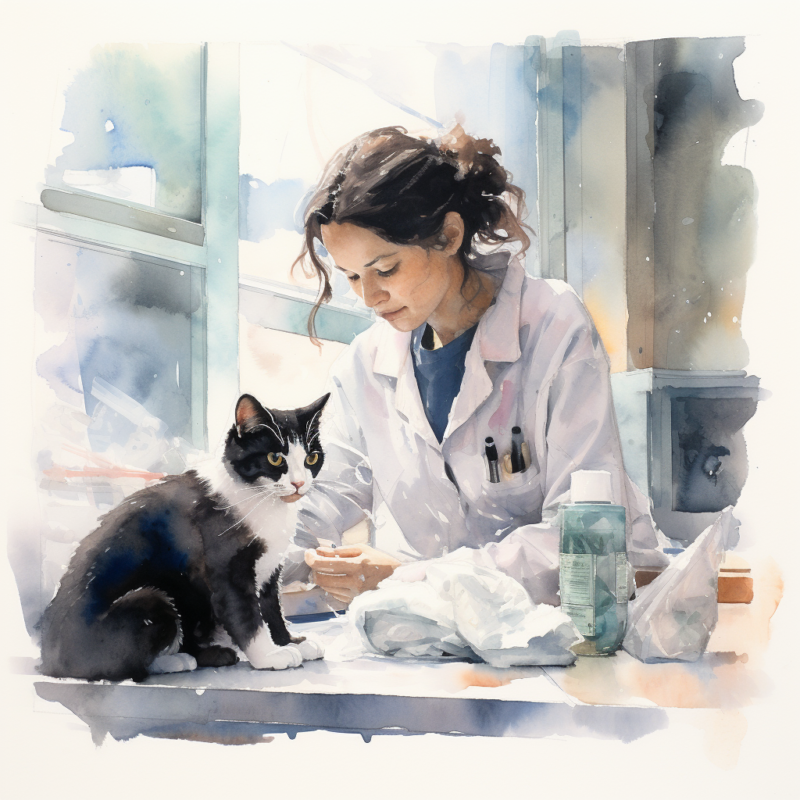
Blood Glucose Testing
The diagnosis is further corroborated by testing the blood glucose concentration. This process requires a blood sample from the cat, which is subsequently analyzed to measure the level of glucose present. Elevated blood glucose concentration is usually indicative of diabetes mellitus in cats.
However, a single test may not suffice for a definitive diagnosis, as stress can also induce a temporary spike in glucose levels.
Urine Glucose Testing
To enhance diagnostic accuracy, urine glucose testing might be carried out. Normally, urine doesn’t contain glucose. However, in a proportion of diabetic cats, surplus glucose in the blood ends up in the urine due to the body’s inability to process it effectively. This results in detectable glucose in the urine.
Fructosamine Test
In cases where the diagnosis isn’t clear-cut after blood and urine glucose testing, a fructosamine test might be employed. This test paints a broader picture of the cat’s glucose curve or average blood glucose level over the preceding two to three weeks. A higher fructosamine level is often suggestive of diabetes.
Glycosylated Hemoglobin Test
Alternatively, a glycosylated hemoglobin test could be administered. This test measures the quantity of glucose attached to the hemoglobin molecules in red blood cells over the cell’s lifespan. This test offers insights into the cat’s blood glucose control over the past few months and can assist in differentiating between stress-induced hyperglycemia and diabetes mellitus.
These diagnostic tests enable the vet to ascertain whether a cat is suffering from diabetes mellitus and gauge the severity of the condition, thereby informing the most suitable treatment plan.
Treatment of Diabetes Mellitus in Felines
Insulin Therapy
Insulin therapy, which involves administering insulin injections beneath the cat’s skin, typically twice daily, is the cornerstone of diabetes treatment in cats. Cats with this endocrine disease lack the hormone insulin, which is vital in regulating blood sugar levels. These insulin injections help restore the deficient insulin, controlling the blood sugar levels. Each cat clinic provides tailored insulin dosages based on the individual cat’s condition and requires routine blood glucose monitoring for adjustment.
Dietary Management
Dietary management is another fundamental aspect of feline diabetes treatment. A diet designed with high protein and low carbohydrate content can help achieve better glycemic control and decrease the required dose of insulin. Veterinary professionals can suggest a suitable prescription diet explicitly crafted for diabetic cats. Regular feeding schedules, paired with these dietary modifications, also aid in managing the cat’s blood sugar levels.
Regular Monitoring
Regular monitoring is paramount in managing diabetes. This involves home-based surveillance of the cat’s overall health and appetite and frequent vet appointments for blood glucose level checks and necessary insulin dosage adjustments. Some pet owners might use pet-specific glucometers at home to track blood glucose levels.
Oral Medications
Oral medications might be prescribed as part of the treatment regimen for feline diabetes in certain cases. These drugs stimulate the cat’s body to produce more insulin or enhance the body’s efficiency in utilizing insulin. However, they are generally used if the cat cannot tolerate insulin injections or in conjunction with insulin treatment if insulin alone isn’t sufficient to regulate blood glucose levels.
Management of Concurrent Diseases
In feline medicine, it’s recognized that many diabetic cats may be dealing with concurrent diseases like obesity, pancreatitis, or urinary tract infections. These conditions can pose complications in diabetes management. Hence, addressing these conditions is crucial to the overall treatment plan. For instance, obese cats might incorporate weight loss programs, while infections might be treated with antibiotics.
Each cat’s treatment plan for diabetes is unique, hinging on factors like the severity of the disease, the presence of other health conditions, and the individual cat’s response to therapy. With appropriate management, including options like Lente insulin or glargine insulin, many cats can enter diabetic remission. Even in cases where remission isn’t achieved, a well-managed diabetic cat can lead a normal and joyful life.
Prevention of Feline Diabetes Mellitus

- Maintain a Healthy Weight: Obesity is one of the main risk factors for diabetes in cats. Therefore, maintaining your cat at a healthy weight is one of the best ways to prevent diabetes. Regular exercise and portion-controlled feeding can help to prevent weight gain.
- Proper Diet: Feeding your cat a balanced diet high in protein and low in carbohydrates can help regulate blood sugar levels and prevent diabetes. Always consult your vet to determine the best diet for your cat.
- Regular Vet Check-ups: Regular veterinary check-ups are important as they can help detect early signs of diabetes or other health issues that may increase the risk of diabetes. Your vet can provide specific advice tailored to your cat’s needs and lifestyle.
- Avoid Steroids When Possible: Long-term use of corticosteroids has been associated with an increased risk of diabetes in cats. Talk to your vet about alternative treatments if your cat requires long-term medication.
- Keep Your Cat Active: Regular play and exercise can help maintain a healthy weight and promote insulin sensitivity, which can help prevent diabetes. Find activities that your cat enjoys and encourage regular playtime.
Remember, while these measures can reduce the risk, they cannot guarantee that your cat will not develop diabetes. It’s important always to monitor your cat’s health and consult your vet if you notice any changes in behavior, eating, drinking, or bathroom habits.
Frequently Asked Questions
Disclaimer: The information provided on this veterinary website is intended for general educational purposes only and should not be considered as a substitute for professional veterinary advice, diagnosis, or treatment. Always consult a licensed veterinarian for any concerns or questions regarding the health and well-being of your pet. This website does not claim to cover every possible situation or provide exhaustive knowledge on the subjects presented. The owners and contributors of this website are not responsible for any harm or loss that may result from the use or misuse of the information provided herein.

